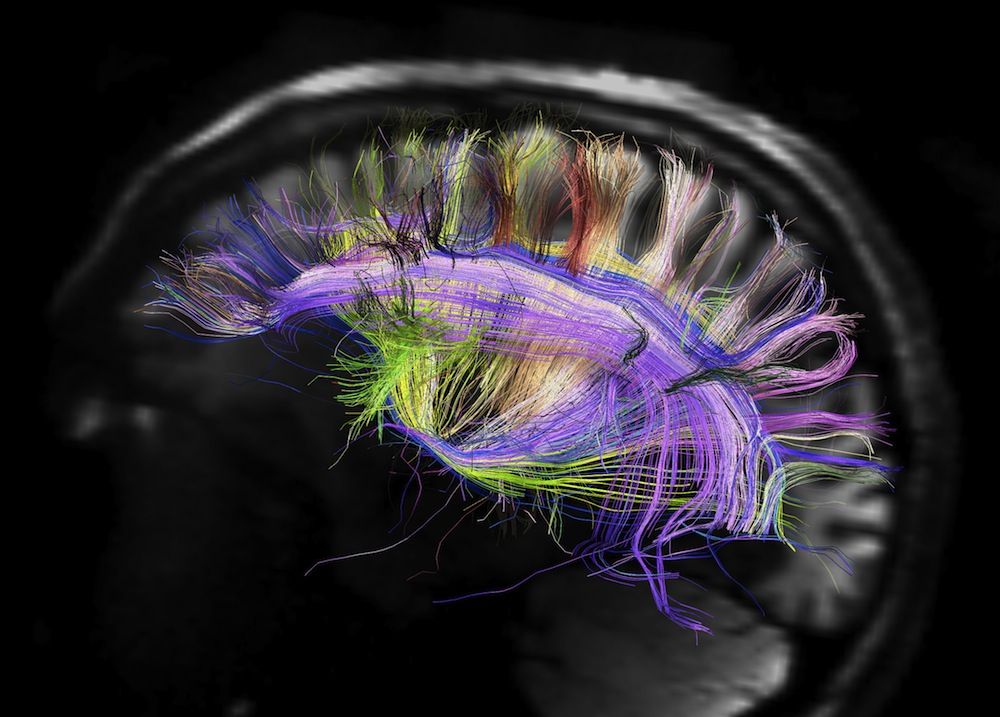Ambitious Brain-Mapping Project's Science Goals Revealed

In April 2013, President Obama launched an initiative to develop new technologies to create a picture of the brain in action. Today, a group of scientists released a roadmap highlighting the specific goals for the project over the next five to 10 years.
The priorities of the BRAIN Initiative (short for Brain Research through Advancing Innovative Neurotechnologies) include mapping brain circuits, monitoring and interacting with brain activity, developing new theories and methods of analysis, and advancing understanding of the human brain.
The project will focus primarily on brain circuits and networks, which represent "a hole in our understanding of brain processes," said Cori Bargmann, a neurobiologist at Rockefeller University in New York City, and co-chair of the project's working group. [Top 10 Mysteries of the Mind]
For the past 60 years, neuroscientists have studied neurons one at a time; for the past 20 years, researchers have been imaging the brain as a whole. Yet "somewhere in between is where most cognition occurs," Bargmann said.
Bargmann presented the report before an advisory committee to the director of the National Institutes of Health today (June 5), and the committee voted to approve it.
Research goals
The report laid out a scientific plan for the next decade. The first five years will focus on technology development, and the following five years will focus on discovery-driven science, the working group said.
Sign up for the Live Science daily newsletter now
Get the world’s most fascinating discoveries delivered straight to your inbox.
Seven high-priority research areas were laid out in the report: identifying all the different cell types in the brain; generating maps of the nervous system from the levels of cells to the whole brain; monitoring neural activity to produce a picture of the brain in action; demonstrating how brain activity causes behavior by actively probing the brain; creating new theories and tools for analyzing data; increasing understanding of the human brain and its disorders; and pulling these goals together to learn how brain activity results in cognition, emotion, perception and action, in both health and disease.
Neuroscientists have already developed some of these tools. For example, doctors have used deep brain stimulation to successful restore faulty brain circuits in Parkinson's disease, and optogenetics — a tool for turning brain cells on or off using light — has been used to probe how specific neurons function.
Project timeline
The report also set out milestones for achieving these goals. Within the next five years, the project aims to conduct a census of cell types in the brain (starting with mice), improve the ability to efficiently map the organ at lower cost and better resolution, develop tools for recording and controlling the activity of neurons, and create multidisciplinary teams of researchers.
From year six to 10, the project aims to extend the cell census to humans, combine different brain measurements into a single experiment, develop less-invasive techniques for monitoring and controlling brain activity, and develop new theories for how the brain encodes information.
"We won't reach all of these goals," said William Newsome, a neuroscientist at Stanford University in Stanford, California, the other co-chair of the BRAIN Initiative working group. Some of the goals will change, and some new ones will arise as the researchers carry out their work, Newsome said.
The report also called for additional funding for the project to support its ambitious goals. The BRAIN Initiative had a budget of $40 million in fiscal year 2014 and $100 million in fiscal year 2015, but the program's leaders now estimate that its budget could grow to $500 million by 2021. Still, the money should not come at the expense of existing NIH programs, Bargmann said.
Ultimately, the group hopes the tools and knowledge gained from the initiative will help scientists develop targeted treatments for specific neurological and psychiatric disorders.
Follow Tanya Lewis on Twitter and Google+. Follow us @livescience, Facebook & Google+. Original article on Live Science.












